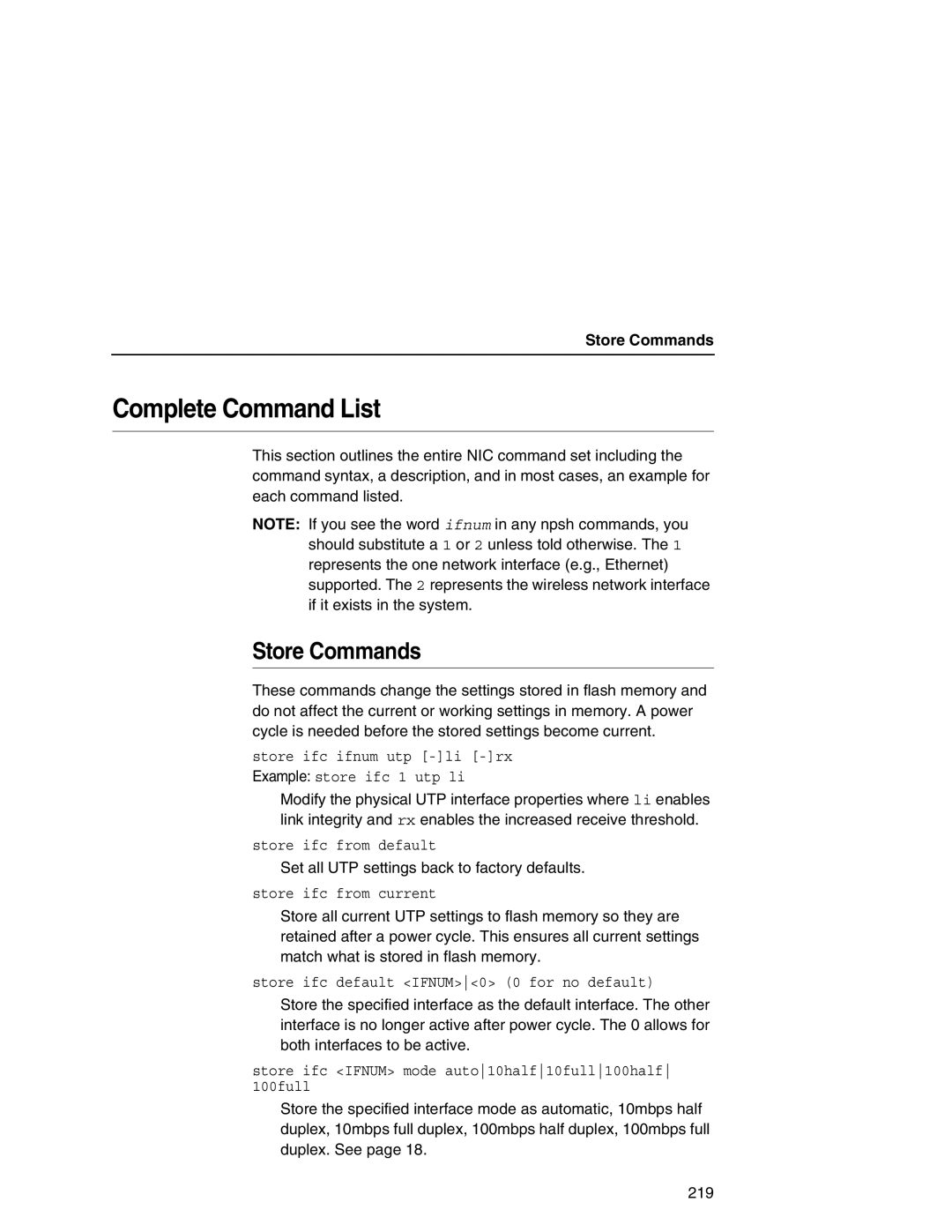
Store Commands
Complete Command List
This section outlines the entire NIC command set including the command syntax, a description, and in most cases, an example for each command listed.
NOTE: If you see the word ifnum in any npsh commands, you should substitute a 1 or 2 unless told otherwise. The 1 represents the one network interface (e.g., Ethernet) supported. The 2 represents the wireless network interface if it exists in the system.
Store Commands
These commands change the settings stored in flash memory and do not affect the current or working settings in memory. A power cycle is needed before the stored settings become current.
store ifc ifnum utp
Modify the physical UTP interface properties where li enables link integrity and rx enables the increased receive threshold.
store ifc from default
Set all UTP settings back to factory defaults.
store ifc from current
Store all current UTP settings to flash memory so they are retained after a power cycle. This ensures all current settings match what is stored in flash memory.
store ifc default <IFNUM><0> (0 for no default)
Store the specified interface as the default interface. The other interface is no longer active after power cycle. The 0 allows for both interfaces to be active.
store ifc <IFNUM> mode auto10half10full100half 100full
Store the specified interface mode as automatic, 10mbps half duplex, 10mbps full duplex, 100mbps half duplex, 100mbps full duplex. See page 18.
219
